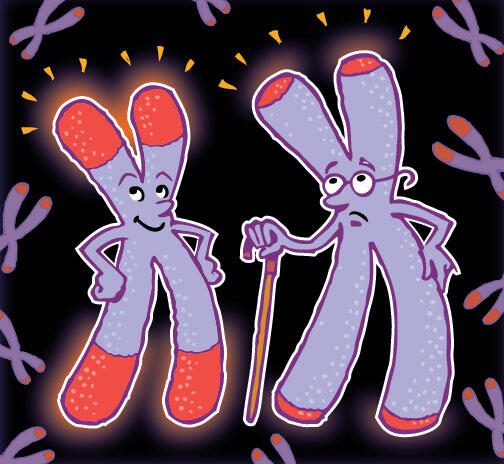BREAKING GROUND: Pursuing a link to aging, cancer
ENDS AND BEGINNINGS Human chromosomes are linear, and each end has a special structure called a telomere — think of it as a shoelace aglet that prevents fraying and unraveling. Telomeres are made of repeating sequences of DNA at both ends of a chromosome. Every time a cell divides, the telomere DNA gets a little bit shorter. Essentially, the telomere DNA is sacrificed to prevent important DNA sequences necessary for life from being lost.
THE SHORT AND LONG OF IT Because telomeres shorten as a cell ages, telomeres of an older person generally are much shorter than those of someone young. But an enzyme called telomerase can add extra DNA repeats onto the telomeres, and thus can lengthen the shorter telomeres every time a cell divides. How this happens is one of the questions of the laboratory of Virginia Zakian, professor of molecular biology.
Zakian recently identified one way cells make sure only the shorter telomeres are lengthened. An enzyme called Pif1, which is able to remove proteins attached to DNA, does just that with telomerase — Pif1 associates with longer telomeres, kicking telomerase off longer telomeres but not shorter ones. This in turn promotes telomerase lengthening of only the shorter telomeres. Lengthening the shorter telomeres inhibits the effects of aging by preventing cells from losing their telomeres completely, which causes cells to die.
The Zakian lab conducts experiments using budding yeast, the one-celled organism used to make wine, beer, and bread, but the same phenomenon also likely occurs in humans.
A CANCER CONNECTION The Pif1 enzyme was discovered in Zakian’s laboratory in 1994. In humans, one of the roles of Pif1 is to help prevent cancer development.
The lab is working to understand whether the tumor-suppressor role of Pif1 is because of its role at telomeres. “There has been little analysis on the human enzyme, but we can study yeast in a test tube to determine how Pif1 functions,” Zakian said.
There is great interest in understanding how telomeres are regulated within the body because they are significant in aging and in cancer. Recently, mutations in telomerase have been found in as many as 70 percent of melanoma patients. Cancer cells constantly are dividing; they need telomerase to add telomeres to chromosome ends to prevent the cancer cells from dying or becoming inactive.
“A continued wave of excitement about telomerase comes from its connection with cancer, but its effects seem even more profound in affecting life span through its role in stem cells,” Zakian said. Some scientists think “everything is about telomeres,” she said, “and really, in the end it may be.”













No responses yet